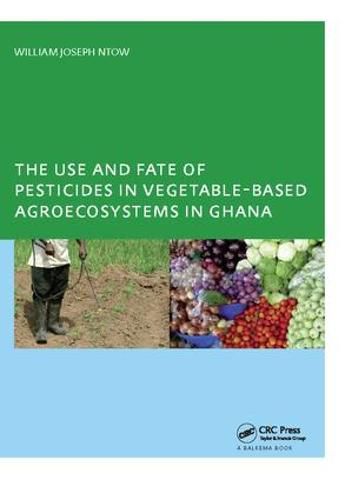Readings Newsletter
Become a Readings Member to make your shopping experience even easier.
Sign in or sign up for free!
You’re not far away from qualifying for FREE standard shipping within Australia
You’ve qualified for FREE standard shipping within Australia
The cart is loading…






The Use and Fate of Pesticides in Vegetable-based Agro-ecosystems in Ghana reviews current knowledge on pesticides use in vegetable farming in Ghana and establishes the fate of pesticides in situ in tropical vegetable-based agro-ecosystems as well as their environmental and public health impacts on selected population groups. A field survey showed that vegetable farmers often spray pesticides on prophylactic basis due to lack of information. Although some farmers may be aware of pesticide hazards, adequate protection is hardly taken to minimize risks. About 70% of exposed farmers had a reduction of 30% or more in whole blood acetylcholinesterase activity. About 95% of the farmers interviewed reported symptoms attributable to pesticide exposure. Water, waterbed sediment, and vegetable crops were checked for residues of the pesticides monitored on the farmers fields. Residues detected in water and waterbed sediment indicated that these have come from runoff from vegetable fields and that the measured levels were transient. Pesticide residue levels detected in five vegetable crop types (tomato, cabbage, pepper, onion, and eggplants) were correlated to the minimal risk levels (MRLs) set by the United States Agency for Toxic Substances and Disease Registry (ATSDR). Mean intakes of residues by 22- to 75-year old adult farmers were found to be low and did not seem to be associated with health risk. Data on persistent pesticide residues in farmers breast milk and blood serum indicated the presence of DDTs, dieldrin, HCB, and HCHs. When daily intakes of DDTs and HCHs to infants through breastfeeding were estimated, some farmers accumulated these compounds in breast milk above the threshold for adverse effects, which raise concerns on children health. Evidence was found for persistence of isomers of endosulfan and its sulfate metabolite in tomato cropped soil and plant tissues. However, the residue concentration in tomato fruits decreased to a level below the Codex MRL g
$9.00 standard shipping within Australia
FREE standard shipping within Australia for orders over $100.00
Express & International shipping calculated at checkout
The Use and Fate of Pesticides in Vegetable-based Agro-ecosystems in Ghana reviews current knowledge on pesticides use in vegetable farming in Ghana and establishes the fate of pesticides in situ in tropical vegetable-based agro-ecosystems as well as their environmental and public health impacts on selected population groups. A field survey showed that vegetable farmers often spray pesticides on prophylactic basis due to lack of information. Although some farmers may be aware of pesticide hazards, adequate protection is hardly taken to minimize risks. About 70% of exposed farmers had a reduction of 30% or more in whole blood acetylcholinesterase activity. About 95% of the farmers interviewed reported symptoms attributable to pesticide exposure. Water, waterbed sediment, and vegetable crops were checked for residues of the pesticides monitored on the farmers fields. Residues detected in water and waterbed sediment indicated that these have come from runoff from vegetable fields and that the measured levels were transient. Pesticide residue levels detected in five vegetable crop types (tomato, cabbage, pepper, onion, and eggplants) were correlated to the minimal risk levels (MRLs) set by the United States Agency for Toxic Substances and Disease Registry (ATSDR). Mean intakes of residues by 22- to 75-year old adult farmers were found to be low and did not seem to be associated with health risk. Data on persistent pesticide residues in farmers breast milk and blood serum indicated the presence of DDTs, dieldrin, HCB, and HCHs. When daily intakes of DDTs and HCHs to infants through breastfeeding were estimated, some farmers accumulated these compounds in breast milk above the threshold for adverse effects, which raise concerns on children health. Evidence was found for persistence of isomers of endosulfan and its sulfate metabolite in tomato cropped soil and plant tissues. However, the residue concentration in tomato fruits decreased to a level below the Codex MRL g